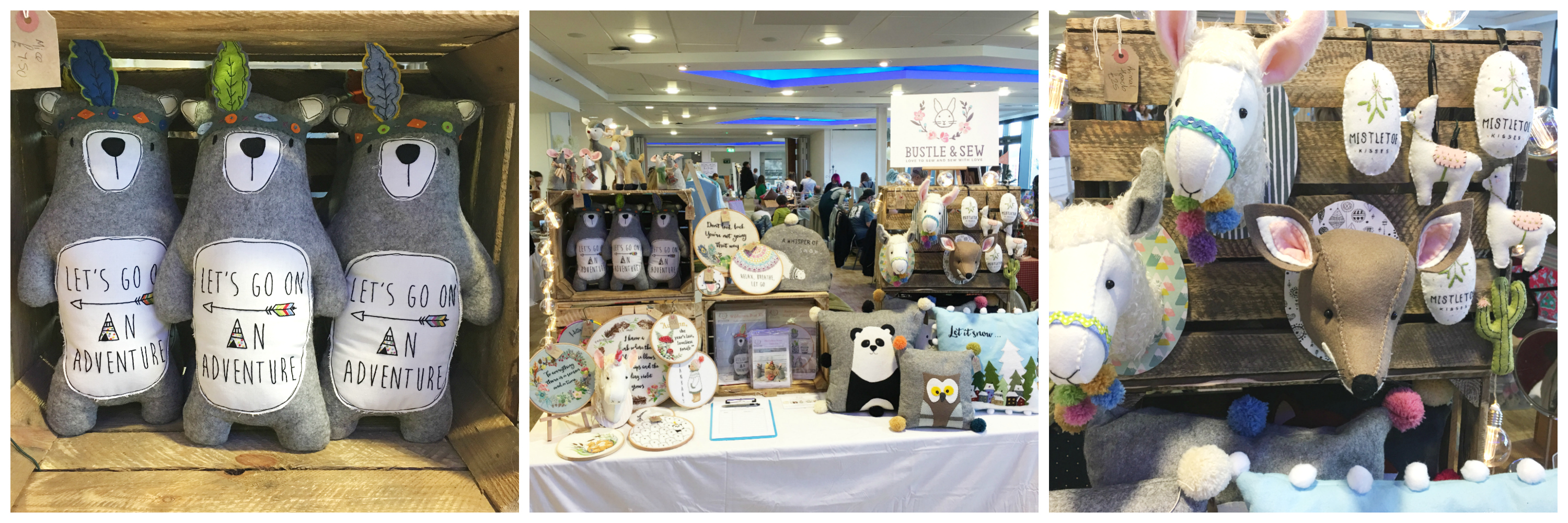In December last year we attended our first craft fair for quite some time and enjoyed a wonderful day. I used to attend quite a few fairs in the early days of Bustle & Sew, before I decided to concentrate more on pattern design and the magazine, and have always really enjoyed the opportunity to meet customers, both existing and new, as well as network with other makers and small business owners – especially as I work from home so don’t get the chance to meet other like-minded people in the “real” world very often.

I chatted to quite a few of the other makers that day, and thought that, particularly as now is the time that many maker/sellers will be planning for the coming season, it would be fun to share with you some of their tips, as well as some that I picked up many years ago when I attended fairs in Devon.
1. Choose your fair wisely
It’s really important to check that the event is a “good fit” for your work. Ideally try to attend as a visitor before you apply for a stand and talk to exhibitors about their experiences of that particular event. Read any literature carefully – ask how the organisers will promote the show, check accessibility and location of the venue and anticipated footfall.
2. Put together your application carefully
The most popular fairs are over-subscribed and have deadlines for applications months before the day itself. You’ll need good images of your work to include with your application that will make your creations stand out, especially in crowded markets such as textiles or jewellery.
3. Plan and prepare
There’s a lot to organise when you’re attending a show. Make a list of everything you’ll need to think about well in advance. This isn’t just about making sure you have enough stock to sell on the day, practising your display (it’s a good idea to have a trial run beforehand), transportation to the event, how you will take payments, flyers and cards, packaging – definitely a list-worthy process!
4. What stock will you take?
When I first started, I used to make the mistake of making things which needed a lot of work but wouldn’t necessarily give me the financial return for all the time I used to spend on them. I had to learn to simplify things a little while still keeping that special something. If you can, try to have a range of products at different price points to appeal to all budgets. “Pocket money” items – very small purchases may well lead to your happy customers returning to make a larger purchase at a later date.
5. Price your work properly
Make sure your prices reflect the materials and time you’ve put into making each item – don’t forget to pay yourself! It isn’t possible to compete with cheap imported goods, so don’t even try – discerning customers will be very clear that their shopping for handmade quality items with a story behind them.
Show your prices very clearly and if you feel uncomfortable with charging the “right” price for your work, perhaps add a little description: “hand stitched embroidery on pure linen” gives the customer a clear reason why this item is more expensive than superficially similar mass made products.
6. It’s not just about your products
If people fall in love with your work, they’re probably going to want to know a little more about you and your creative process – how you get your ideas and inspiration and how you make your creations. It’s up to you how much you want to share of course, but if you stick to talking about your work then all should be fine.
Selling at an event can be the first and only time a customer meets you, so it’s important to try to make a good impression. Don’t lurk behind your stand out of sight, stand up as much as possible, be friendly and ready to talk about your work (even if you’ve explained the same thing a dozen times already that day!).
If there is a way you can demonstrate your craft it can be a great talking point and instantly shows people you are the maker and demonstrates your skill. Be friendly and engaging – a smile is probably the best sales tool you have!
Do you have any other tips for craft fair success? If you do, please leave them below – we’d love to know!
Article originally appeared in the March issue of Bustle & Sew Magazine
Leave a Reply